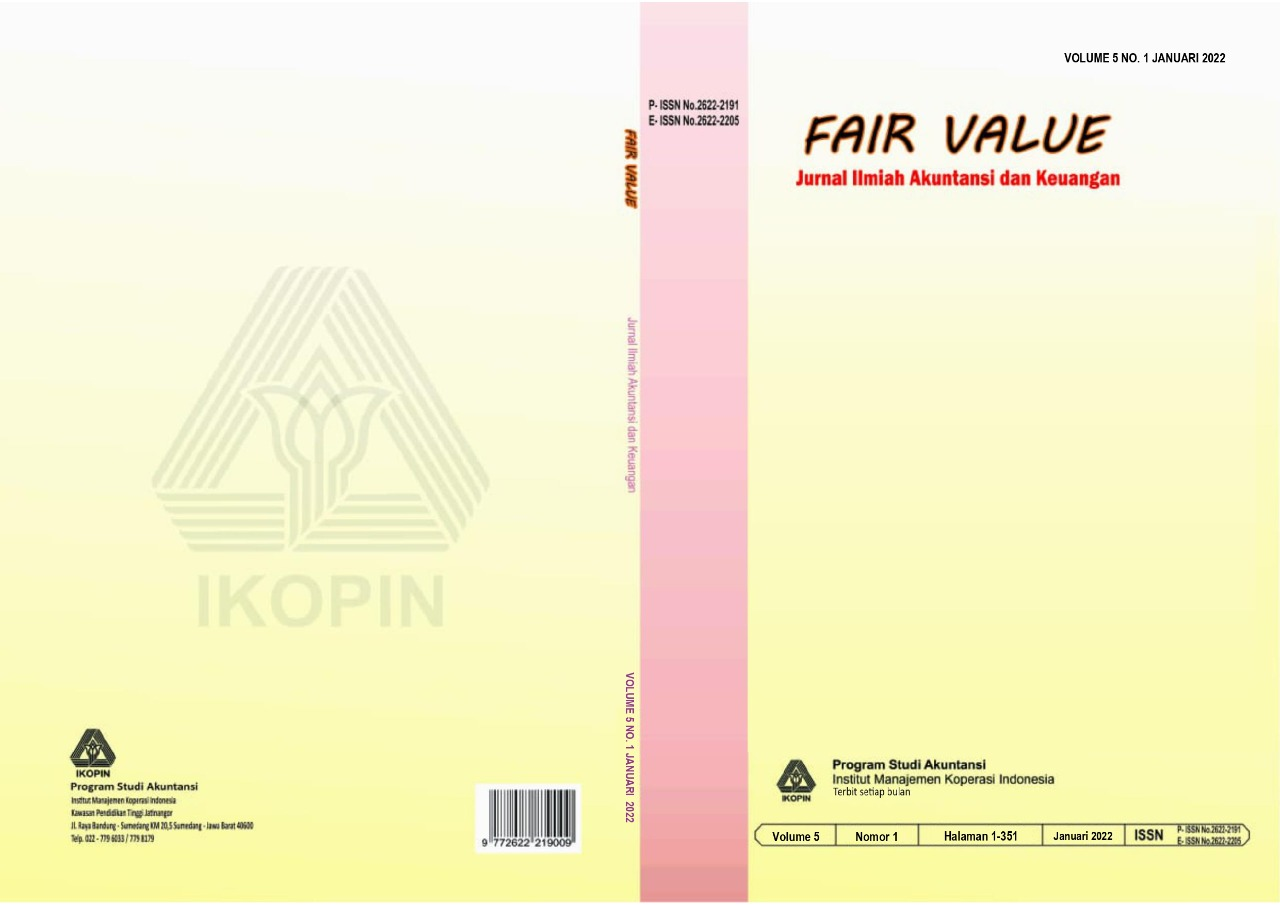Pengaruh tarif bea masuk, profil importir, frekuensi impor, fasilitas kepabeanan, dan nilai pabean pada tax evasion di bidang kepabeanan
Main Article Content
Abstract
Currently, the Directorate General of Customs and Excise (DGCE) is facing challenges in balancing the service and supervisory functions through Post-Clearance Audit (PCA). Through quantitative studies, this research aims to analyze the effect of the criteria for determining the object of the audit: customs duty tariff, importer profile, import frequency, customs facilities and customs value on tax evasion in the customs sector. This study uses secondary data obtained from internal data of DGCE with a sample of 400 companies selected. This research uses multiple regression analysis method with the results showed that the variable import frequency, customs facilities, and customs value individually had a positive and significant effect on tax evasion on customs, while the variable import duty rates and importer profile individually had no significant effect. Simultaneously, the variable customs duty tariff, importer profile, import frequency, customs facilities and customs value have a positive and significant effect on tax evasion in the customs sector. This research is expected to be an input reference for the Directorate Audit of Customs and Excise of DGCE in an effort to improve customs audit performance by focusing on audits on companies that have large tax evasion potential.
Article Details
References
Al-Zaqeba, M. A. A., & Al-Rashdan, M. T. (2020). Extension of the TPB in tax compliance behavior: The role of moral intensity and customs tax. Int. J. Sci. Technol. Res, 9(4), 227–232.
Arnold, M. (2017). Customs control in the 21st century. Academy of Customs Service of Ukraine.
Christianti, L. I. (2020). Pengaruh Nilai Pabean, Tarif Bea Masuk, Profil Importir dan Fasilitas Kepabeanan terhadap Tax Evasion di Bidang Kepabeanan. Universitas Trisakti.
Darwin, A. (2018). Analisis perbandingan kelembagaan administrasi pabean di dunia. Jurnal BPPK: Badan Pendidikan Dan Pelatihan Keuangan, 11(1), 56–74.
Epaphra, M. (2015). Tax rates and tax evasion: evidence from missing imports in Tanzania. International Journal of Economics and Finance, 7.
Farouq, M. (2018). Hukum pajak di Indonesia. Prenada Media.
Jonathan, D. R. (2018). Pengaruh Tarif Bea Masuk, Nilai Pabean, dan Profil Perusahaan Terhadap Tax Evasion di Bidang Kepabeanan. Universitas Trisakti.
Miskam, M., Noor, R. M., Omar, N., & Aziz, R. A. (2013). Determinants of Tax Evasion on Imported Vehicles. Procedia Economics and Finance, 7(Icebr), 205–212. https://doi.org/10.1016/s2212-5671(13)00236-0
Palupiningrum, N. (2017). Analisis Pengaruh Kriteria Penentuan Objek Audit Importir Terhadap Tagihan Audit pada Direktorat Audit Kepabeanan dan Cukai. Sekolah Tinggi Akuntansi Negara.
Riesfandiari, I. (2019). Tinjauan atas sistem kerja dan infrastruktur nilai pabean di DJBC menggunakan WCO diagnostic tool. Jurnal Perspektif Bea Dan Cukai, 3(2).
Sembiring, P. A. (2015). Analisis Penentuan Objek Audit Kepabeanan pada Direktorat Jenderal Bea dan Cukai berdasarkan Standar Manajemen Risiko World Customs Organization (WCO). Sekolah Tinggi Akuntansi Negara.
Silaban, K. R. (2015). Analisis Pengaruh Penentuan Objek Audit Importir terhadap Jumlah Temuan Audit Umum Kepabeanan pada Laporan Hasil Audit Kanwil DJBC Sulawesi. Sekolah Tinggi Akuntansi Negara.
Sitorus, G. (2018). Pengaruh Kriteria Penentuan Objek Audit Perusahaan di Kawasan Berikat terhadap Pengamanan Penerimaan Negara. Universitas Trisakti.
Surahman, W., & Putra, U. Y. (2018). Faktor-faktor persepsi wajib pajak terhadap etika penggelapan pajak. Jurnal REKSA: Rekayasa Keuangan, Syariah, Dan Audit, 5(1), 1–10.
Syaifullah, S., & Ramdany, R. (2020). Mengukur tingkat kepatuhan kepabeanan perusahaan eksport dan import di Indonesia. Jurnal Akuntansi, 9(1), 69–89.

